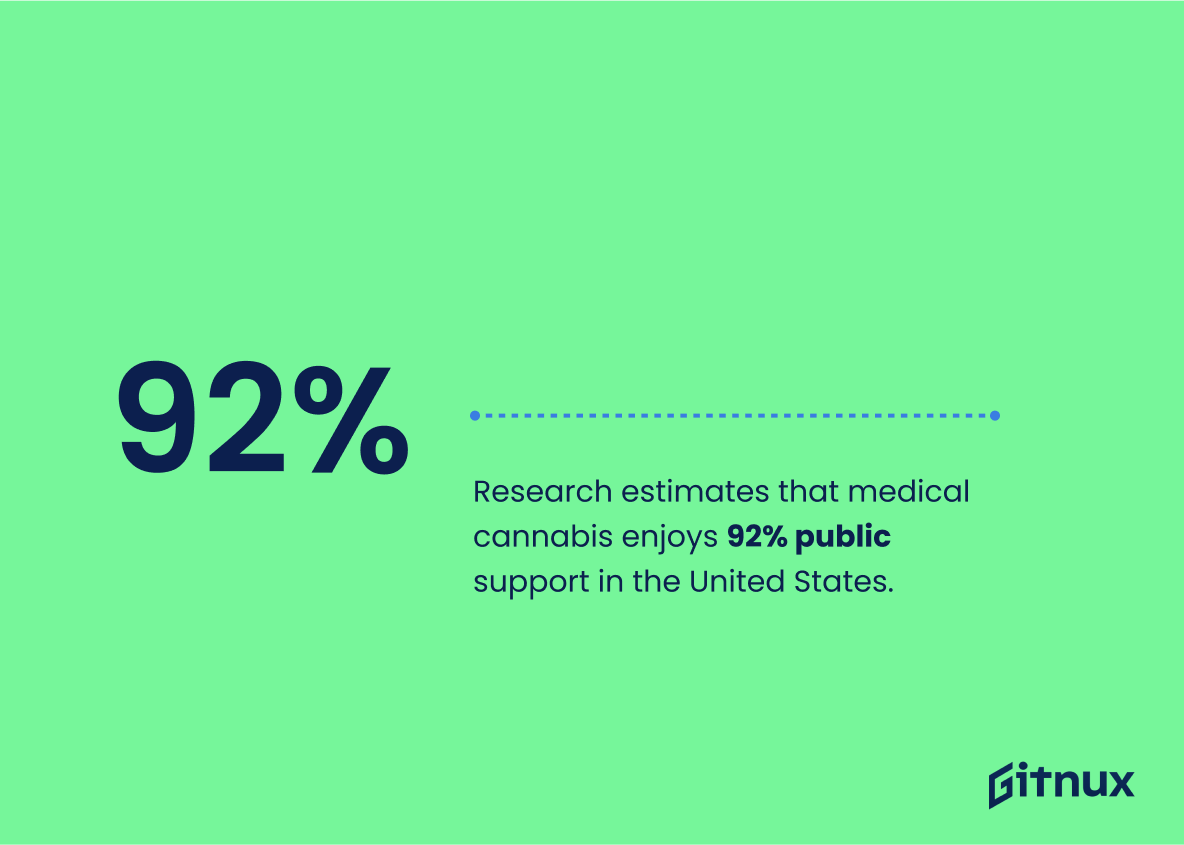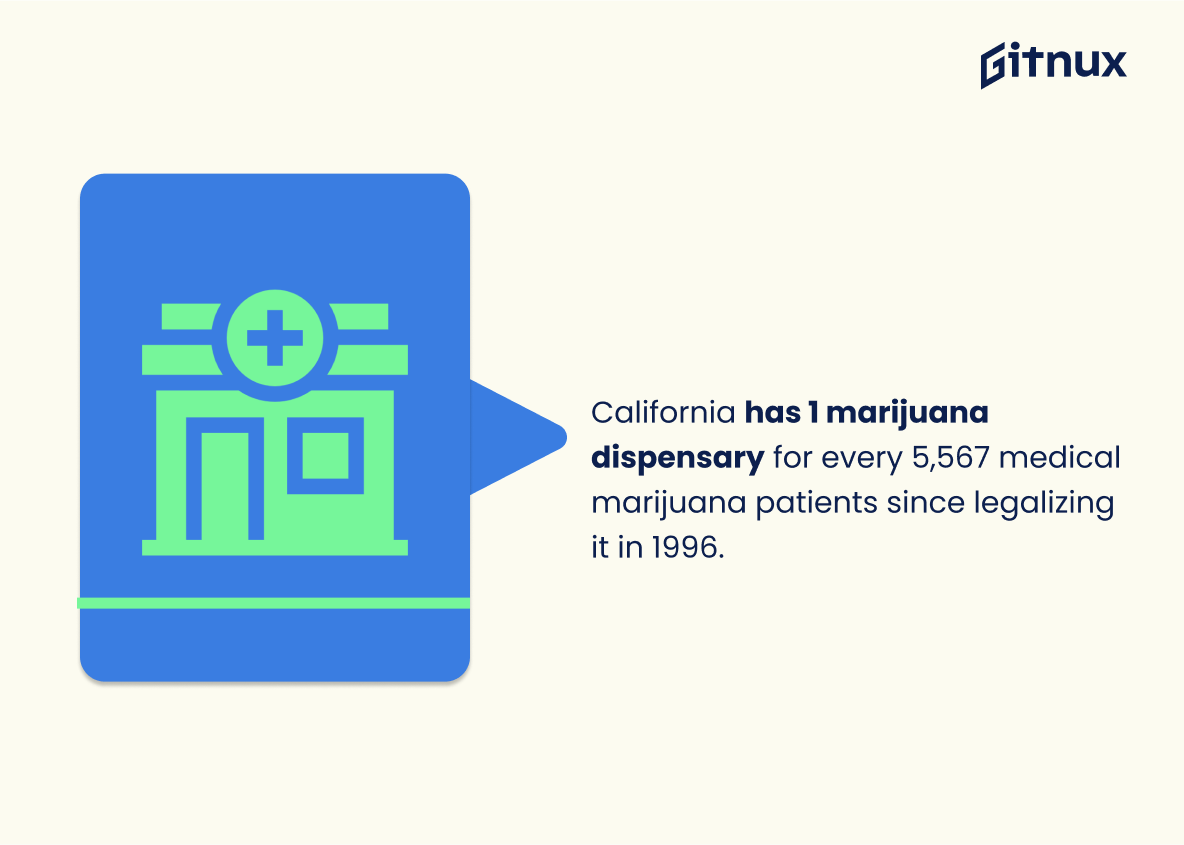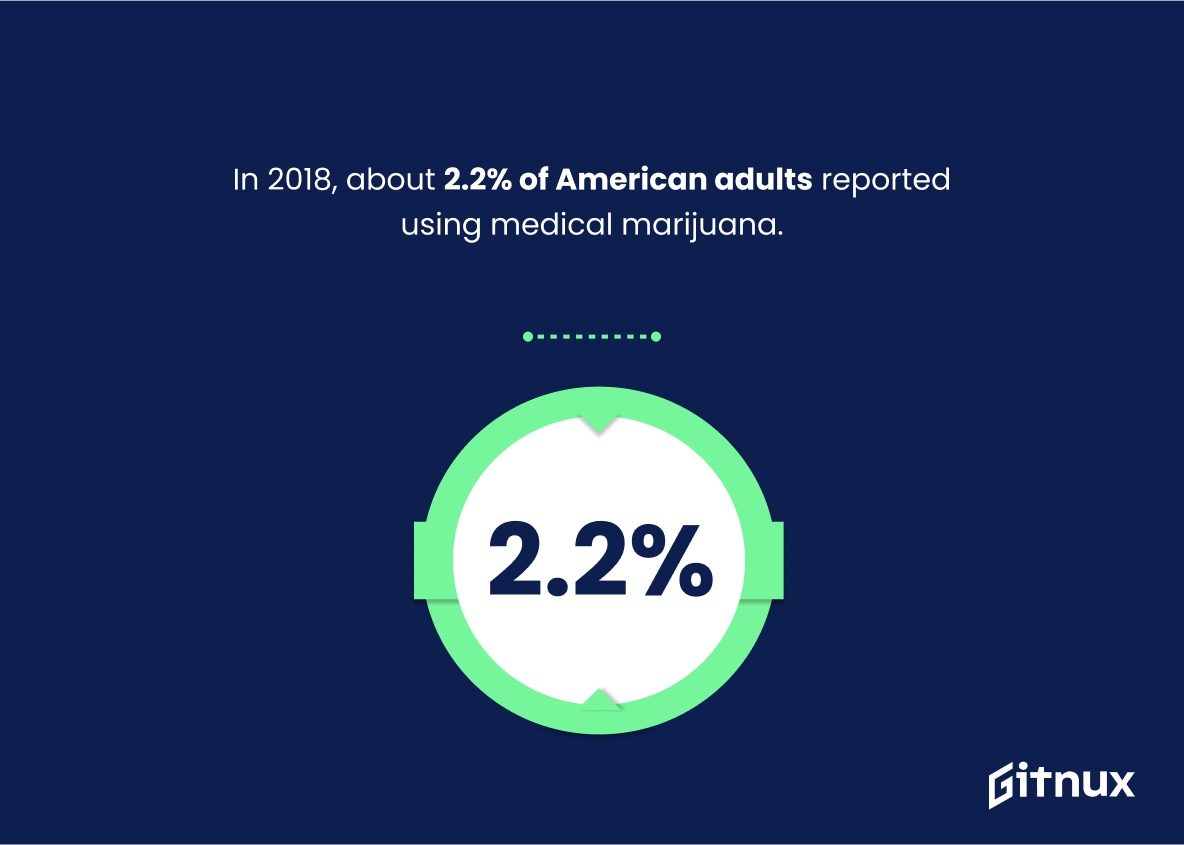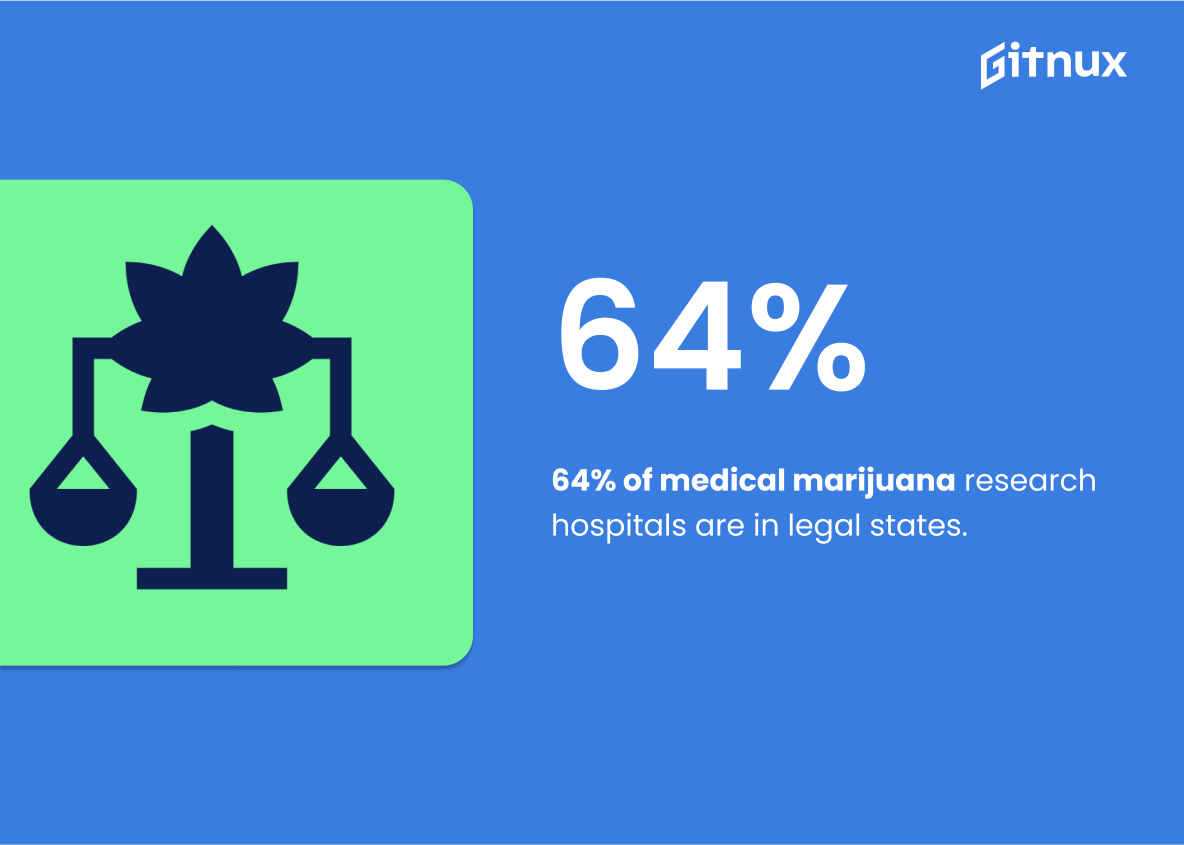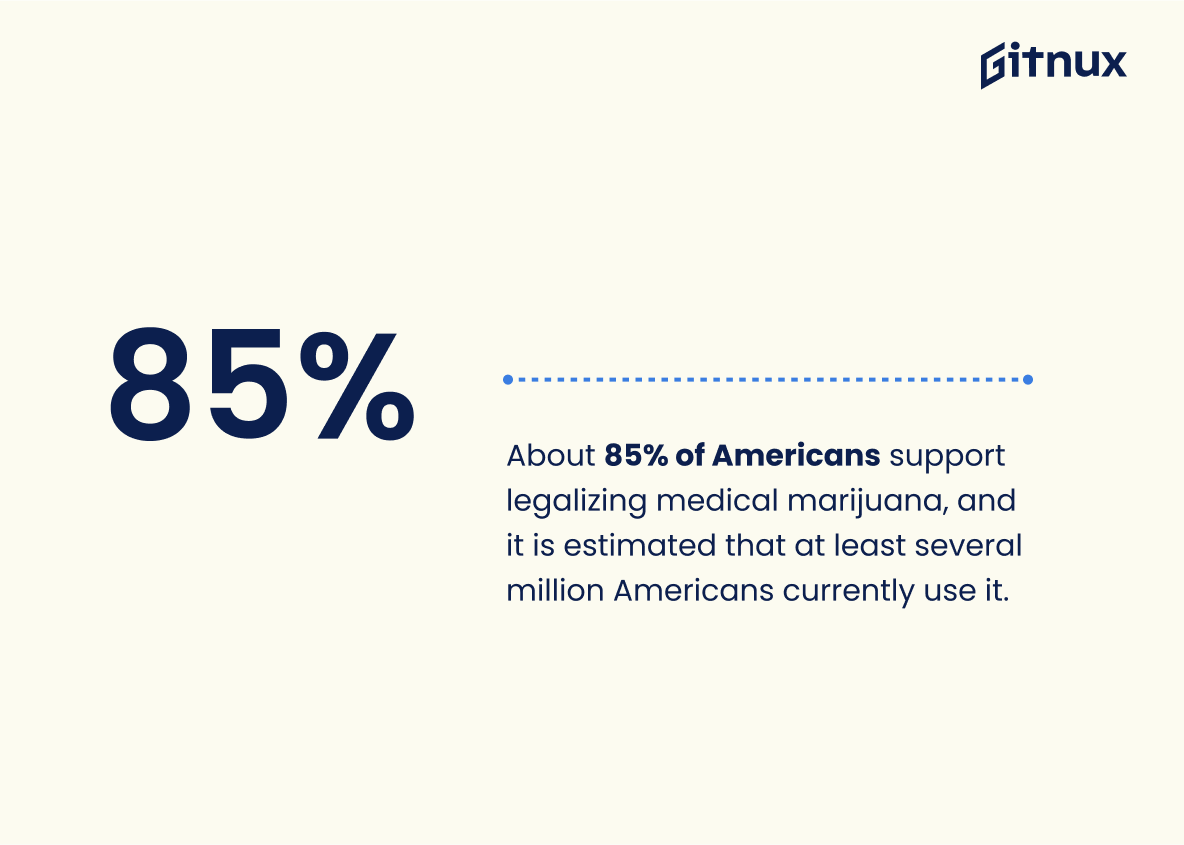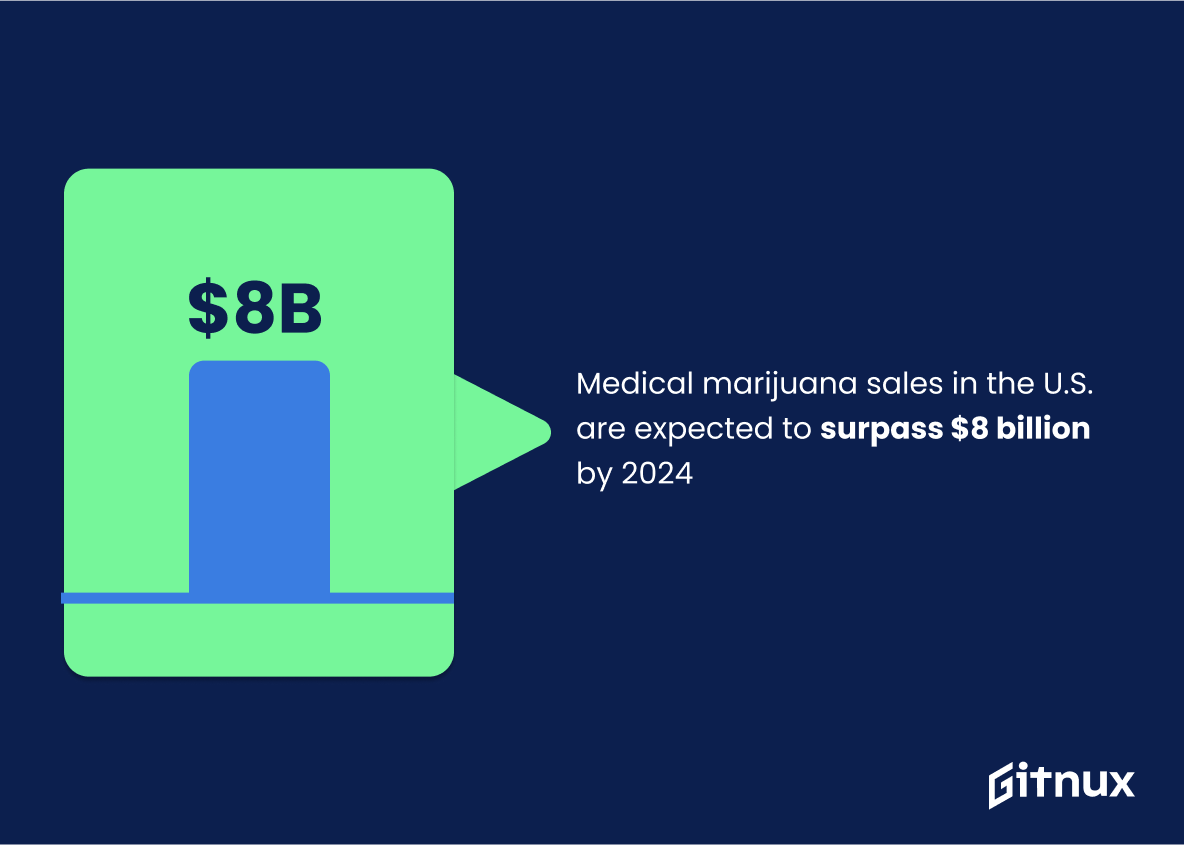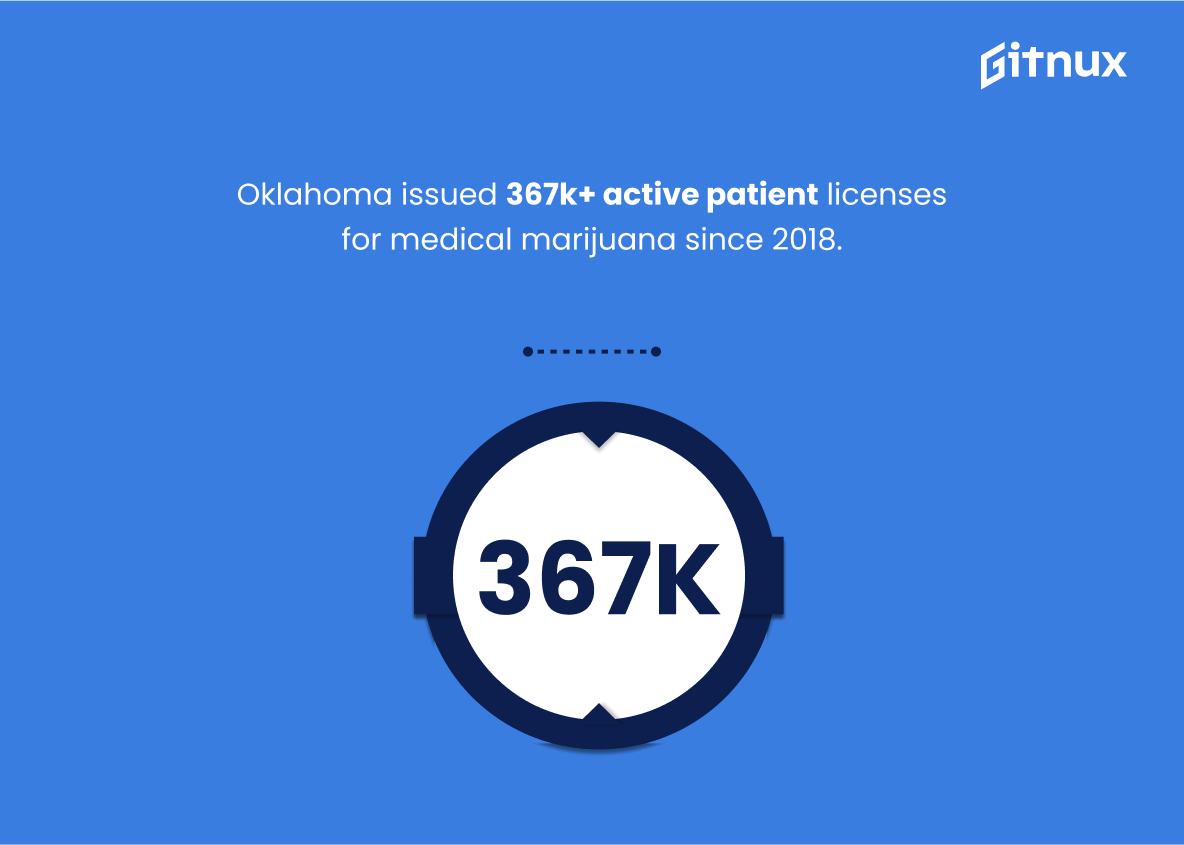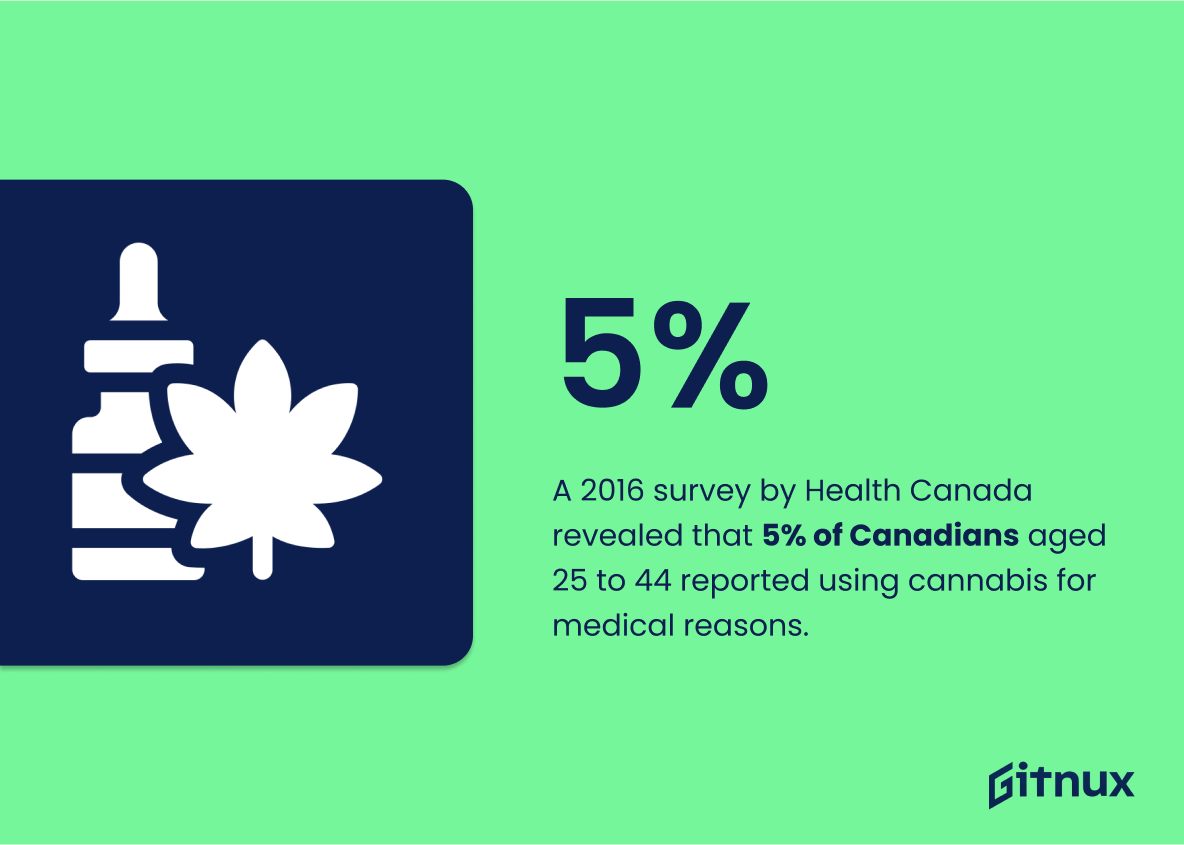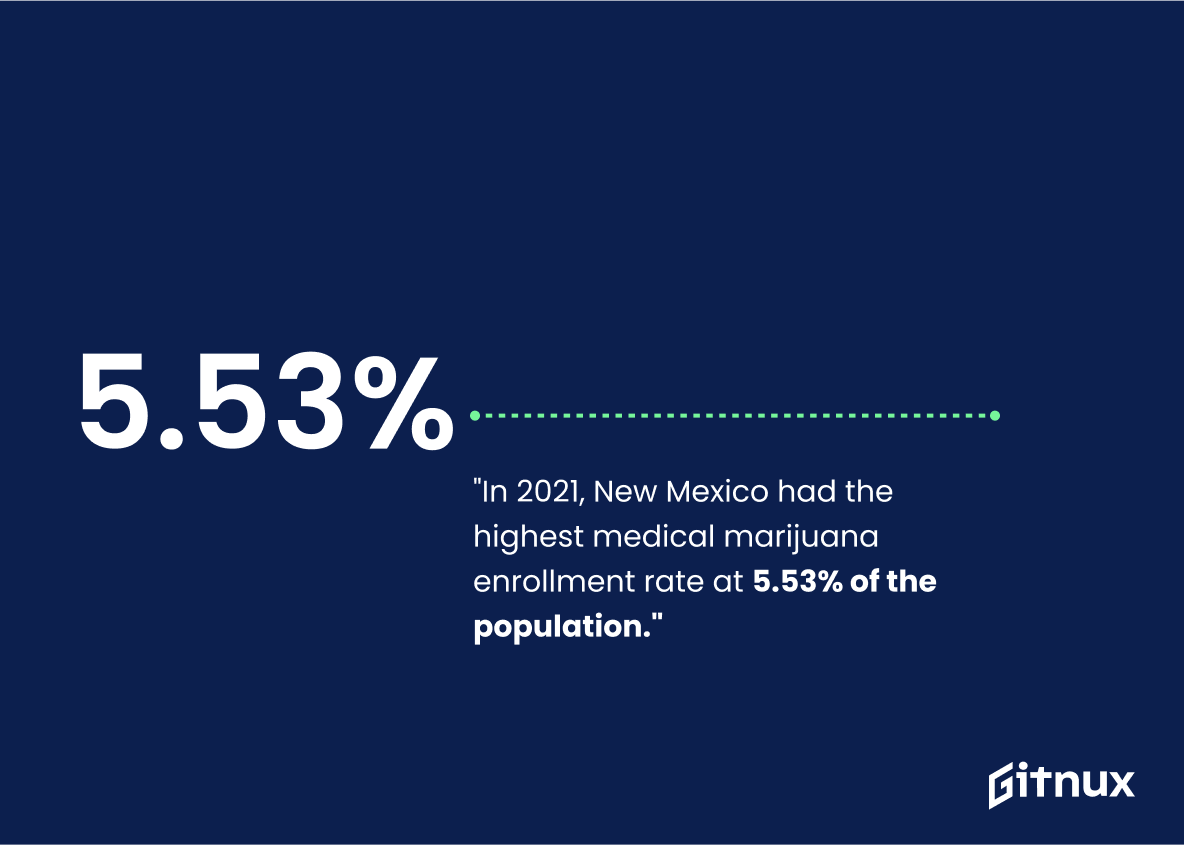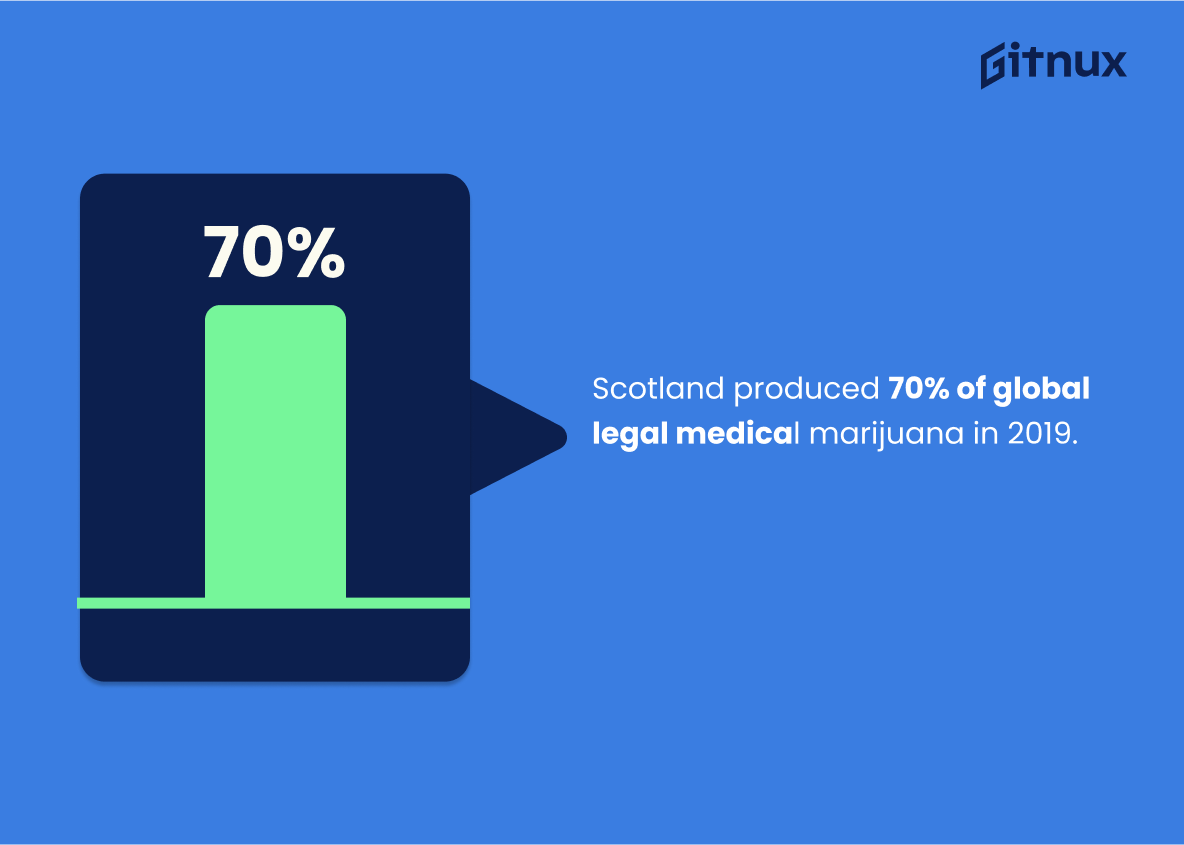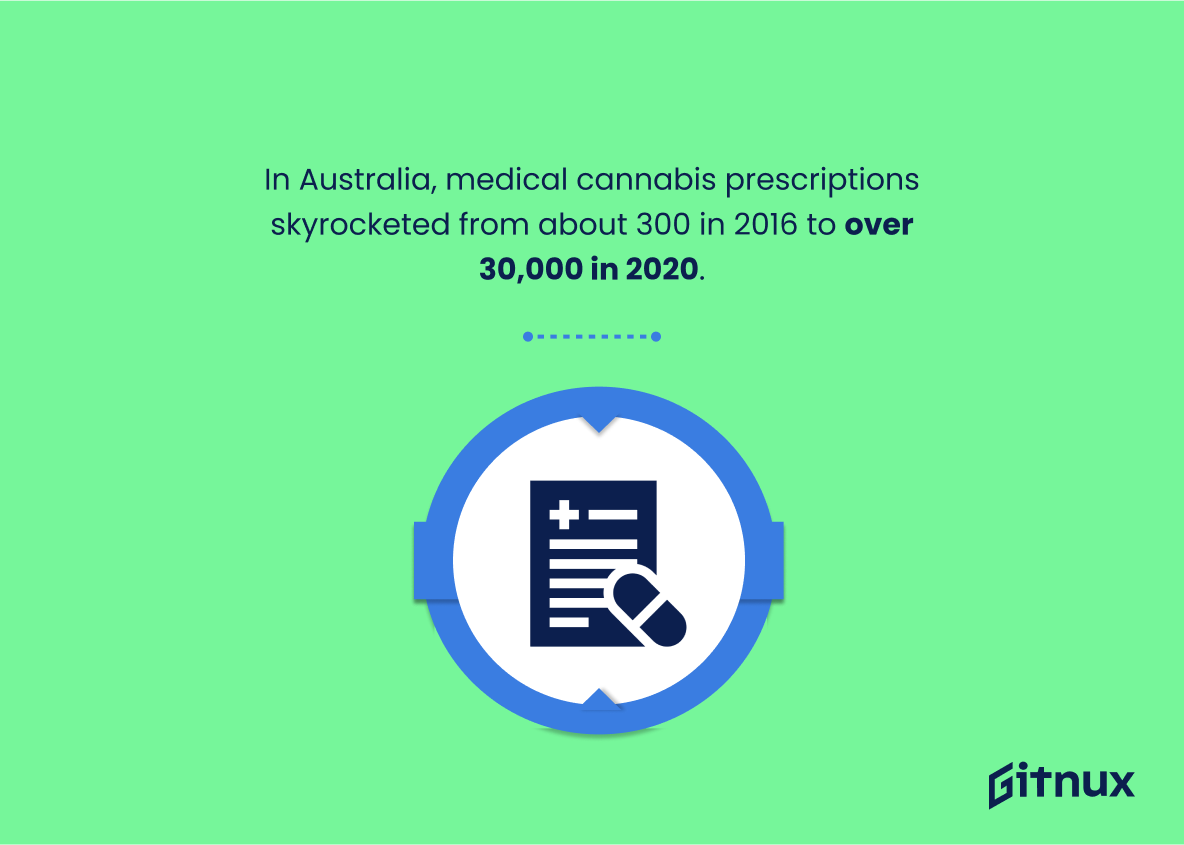In the ever-evolving world of healthcare, medical marijuana has staked its claim as a significant player. It is a subject inundated with a mixture of opinions, myths, and solid scientific research. As one delves deeper into this intriguing topic, the discovery of insightful and surprising medical marijuana statistics can play a pivotal role in shaping perspectives. This article aims to navigate you through these fascinating numbers and trend data, shedding light on the undeniable impact and potential uses of medical marijuana in various health sectors globally. Join us as we dive headfirst into the world of medical marijuana, guided by the compass of hard facts and figures.
The Latest Medical Marijuana Statistics Unveiled
Approximately 4.8 million people in the United States reported using marijuana medically in 2019.
Plunging into the heart of this data, we find that a staggering figure of around 4.8 million individuals turned to medical marijuana in 2019, serving as a testament to its widespread acceptance and utilization in the United States. The point here isn’t just about this impressive number, it extends far beyond that. This highlights the monumental shift in public opinion regarding this alternative treatment option, throwing light on the fact that it’s no longer a fringe or controversial choice. This number also shines a spotlight on the scale of potential market opportunity for entrepreneurs, companies and investors in the medical marijuana industry. Moreover, it underscores the healthcare system’s intrinsic need to thoroughly understand the therapeutic benefits, potential risks, and clinical applications of medical marijuana, as millions of people are utilizing it. Therefore, this data point is not just a mere standalone number, it’s a crucial piece of the evocative story being spun in the world of medical marijuana.
There is a significant drop (8.5%) in opioid overdose death rates in states that have legalized medical marijuana.
Shining a spotlight on this particular statistic underscores an intriguing ripple effect of legalizing medical marijuana – an 8.5% drop in opioid overdose death rates in states where it’s permitted. Using this information as a life-preserver, it suggests that medical marijuana could potentially play a role in mitigating the wave of the opioid crisis. Consequently, these figures offer crucial insights and stimulate thought-provoking discussions about the overarching impact of embracing medical marijuana beyond its immediate medical uses. Thus, it’s indispensable to include in a blog post dedicated to explicating Medical Marijuana Statistics.
Research estimates that medical cannabis enjoys 92% public support in the United States.
Unearthing this striking percentage – an overwhelming 92% public support for medical cannabis in the United States – provides a compelling cornerstone for any discourse on Medical Marijuana Statistics. It isn’t just a fleeting datum. This overwhelming consensus practically screams from the rooftops a depth of public acceptance, potentially reshaping opinions, moulding laws, and tipping the scales towards a more cannabis-inclusive healthcare environment. It hints at an increasing recognition of cannabis as a potent therapeutic agent, demolishing past prejudices and opening doors for path-breaking advancements in medical research. An empirical evidence of this scale and intensity demands serious contemplation, setting the stage for a vibrant discussion in any blog post devoted to the subject matter. As such, the significance of this number transcends beyond being a mere statistic – it is, in many ways, a mirror of evolving societal attitudes.
In California, the first state to legalize medical marijuana in 1996, there is one marijuana dispensary for every 5,567 medical marijuana patients.
Embedded in the heart of the Golden State’s journey with medical marijuana, the ratio of marijuana dispensaries to patients threads an important tale. Acting as a mirror, this statistic reflects the state of access to medical marijuana in California. Although the state was pioneering in legalizing this form of treatment, this ratio underlines a fundamental issue — the distribution and availability. One dispensary for every 5,567 medical marijuana patients could mean potential difficulty for patients to acquire treatment. Notably, it touches upon diversity, availability, and serviceability in this field. It prompts people to think about the possible strains on these dispensaries, empathize with patients, and take a closer look at the legislation regarding these establishments. As you meander through our medical marijuana statistics, this figure calls for deep understanding and, in turn, fuels the much-needed action.
In 2018, about 2.2% of American adults reported using medical marijuana.
Highlighting the statistic that around 2.2% of American adults reported using medical marijuana in 2018 paints a vivid picture of the growing acceptance and adoption of this form of treatment. It gives a pulse of the nation’s changing attitudes and serves as a testament to the shifting sands of medical practice. This numerical snapshot provides solid ground on which a blog post can delve into the particulars of medical marijuana usage, its pros and cons, and the legalities surrounding it. Furthermore, it also acts as a barometric reading of sorts, enabling readers to appreciate the gradual transition in medical marijuana usage over the years, and forecast future trends.
64% of hospitals in states with legal medical marijuana are involved in some form of medical marijuana research.
Highlighting the statistic that ‘64% of hospitals in states with legal medical marijuana are involved in some form of medical marijuana research,’ underscores how significantly medical marijuana has permeated the healthcare landscape. It showcases a commendable amount of engagement and interest from medical institutions in exploring and unearthing the true potential benefits of this alternative treatment. This quantitative detail provides a strong backing to the growing acceptance and credibility of medical marijuana within the traditional healthcare systems, sending a wave of curiosity and confidence among readers who may be considering this plant’s therapeutic use.
Among older adults in the US using medical marijuana, 15% initiated use after age 60.
Shining a light on the illuminating fact that 15% of older adults in the U.S. embarked on their medical marijuana usage journey post the age of 60 brings forward an intriguing narrative in our medical marijuana statistical odyssey. This datum underscores the shifting perceptions and expanding acceptance of this therapeutic alternative among the mature population – a demographic often set in its healthcare methods. It also prompts a deeper exploration into the potency, safety, and efficacy of medical marijuana for conditions mainly affecting this age bracket, which could potentially result in a noteworthy paradigm shift in geriatric care in the country.
About 85% of Americans support legalizing medical marijuana, and it is estimated that at least several million Americans currently use it.
In weaving the narrative on medical marijuana statistics, it’s significant to note the large majority of Americans, around 85%, joyfully backing its legalization. Such a considerable chunk of popular support underscores a broader societal transformation where medical marijuana is no longer considered an outcast, but an essential part of healthcare reform. Simultaneously, the millions of current users also highlight the ongoing reality. It’s not just theoretical backing we see, but on-the-ground application. This potent combination of majority backing and practical usage tells a captivating story about the place of medical marijuana in contemporary American society.
Medical marijuana sales in the U.S. are expected to surpass $8 billion by 2024
Delving into the realm of medical marijuana, an upward trend is slowly transforming this once stigmatized plant into a booming market. As we gaze upon the horizon of 2024, predictions herald an astounding $8 billion in U.S. medical marijuana sales. This paints not just a picture of growth, but an entire expedition across new territories of medicine and entrepreneurship.
This information injects considerable significance into our conversation about medical marijuana statistics. The numbers not only reflect shifting societal perspectives but also illuminate the vast economic potential embedded in this therapeutical trailblazer. It also represents the ripple effects of legislative changes, endorsing the therapeutic use of cannabis across several states, thus expanding its accessibility.
Moreover, these predicted profits shed light on the potential tax revenue, indicating that states and the federal government could reap substantial economic benefits. This could also stimulate job growth and development in related sectors, generating a butterfly effect across the economy. In the whirlwind of these changing winds, the future of medical marijuana is a storyline in the making, and $8 billion appears as more than just a statistic – it becomes a powerful narrative of anticipated transformation.
By 2021, Oklahoma had issued more than 367,000 active patient licenses since the inception of its medical marijuana program in 2018.
A staggering figure, such as Oklahoma having issued in excess of 367,000 active patient licenses since 2018, lends a remarkable testimonial to the burgeoning acceptance and growth of medical marijuana across the state. This statistic not only serves as a marker of the phenomenal trajectory of medical cannabis utilization, but it also spotlights the magnitude of people benefitting from this program, demonstrating a shift in the social and medical perception of marijuana. Embedded within these numbers, we find evidence of how progressive legislation can affect actual usage and draw conclusions about future trends and potential impacts on healthcare. It is more than just a number – it is a living and evolving narrative of medical advancement and societal change.
A 2016 survey by Health Canada revealed that 5% of Canadians aged 25 to 44 reported using cannabis for medical reasons.
Residing at the heart of the discussion on Medical Marijuana Statistics is the compelling finding from Health Canada’s 2016 survey. This eye-opening revelation has it that a significant 5% of the Canadian populace aged 25 to 44 leaned into the medical benefits of cannabis. A testimony of this scale underlines the sheer magnitude of medical cannabis acceptance within a crucial age demographic, pushing it to the forefront of the medical marijuana conversation. Every percent is a representation of thousands of Canadians embracing cannabis for health and wellness purposes, thus giving a human face to the numbers and a resonant voice to their collective cannabis experience.
Michigan, the state with the second largest number of patients, had nearly 274,000 registered medical marijuana patients, which is more than 2% of the state’s total population.
Diving into the heart of the medical marijuana landscape, one cannot overlook the significant numbers coming from Michigan. With almost 274,000 registered medical marijuana patients, the ‘Great Lake State’ captures the essence of the public health paradigm shifting towards alternative remedies. The fact that these individuals constitute more than 2% of the entire state population puts into perspective the magnitude of this movement. In the vortex of medical marijuana statistics, understanding Michigan’s position empowers readers to grasp a more comprehensive view of the countrywide acceptance, usage, and insights towards medical marijuana – an epoch-defining trajectory in modern healthcare.
As of 2021, New Mexico had the highest per capita patient registration rate, with a staggering 5.53% of the state’s population enrolled in the medical marijuana program.
This vibrant piece of data serves as a key indicator, showcasing the acceptance and usage trends of medical marijuana. In the rich tapestry of information, New Mexico stands out, setting a bold tone with the highest per capita patient registration rate for the substance. It paints a clear picture of the medicinal plant’s prominent role in the state’s healthcare fabric, with an astonishing 5.53% of its populace being enrolled in the program. This unexpected revelation brings out the widespread acceptance and reliance on medical marijuana therapy in this region. Given this context, it serves as an insightful flashpoint focusing on the evolving attitudes and behaviors towards this alternative medicinal approach across different states in the US.
Scotland is the largest producer of medical marijuana in the world, accounting for 70% of the legal cannabis grown in 2019.
Highlighting Scotland’s massive contribution to the global medical marijuana production introduces an intriguing twist in the global Medical Marijuana narrative. It underscores Scotland’s dominance in this rapidly emerging industry, providing insight into a unique niche where this country has carved out an impressive stronghold. The magnitude of their involvement — a staggering 70% share in 2019 — asserts the fundamental role Scotland plays in shaping the industry, impacting supply chains, policy-making, and research globally. This fascinating revelation anchors the broader conversation about Medical Marijuana Statistics in a concrete, real-world scenario, presenting readers with a tangible point of reference and sparking interest in the dynamics and nuances of worldwide production trends.
In Australia, medical cannabis prescriptions skyrocketed from about 300 in 2016 to over 30,000 in 2020.
Painting an impressive canvas of the rapidly changing landscape of medical marijuana usage, this bit of data casts a spotlight on Australia’s soaring prescription numbers—jumping from a modest 300 in 2016 to a whopping 30,000 in 2020. In the unfolding narrative of the blog post, this staggering increase underscores the shifting attitudes, policy reforms and growing acceptance of cannabis as a medical aid in today’s world. It’s as if we’re rapidly sprouting toward greener pastures, an apparent reversal from earlier reluctance in embracing cannabis for healthcare. No doubt, this Australian pattern reflects a trend with potential global implications, and is testament to the expanding recognition of medical marijuana’s therapeutic potential in managing a range of chronic conditions.
Over 70% of cancer patients in the U.S. with access to medical cannabis use it to help manage symptoms such as pain, nausea, and depression.
This captivating statistic underscores a significant trend in the modern medical landscape: the reliance on cannabis for symptom management by most U.S. cancer patients who have the opportunity to access it. It is a potent testament to the growing recognition of cannabis’ therapeutic benefits, particularly in dealing with the agonies of pain, nausea, and depression often associated with cancer. Ultimately, this figure casts light on how integrally medical cannabis has woven itself into the fabric of contemporary healthcare, reinforcing many of the arguments made for the continued research and utilization of medicinal marijuana especially in a blog post focusing on Medical Marijuana Statistics.
Conclusion
The growing body of medical marijuana statistics clearly demonstrates a seismic shift in the societal understanding and acceptance of this natural remedy. With proven benefits across a myriad of health conditions and an impressive increase in it’s legal use across regions, medical marijuana is more than just a passing trend. It is an evolving medical revolution. As the evidence continues to mount, the era of skepticism and stigma seems to be fading, making way for informed, data-backed discourse on medical marijuana. The future of healthcare may indeed be green. Let’s keep our minds open to the potential of this plant, and continue to explore its medical applications, informed by statistics and empirical evidence. Marijuana is not a magic cure-all, but it’s certainly worthy of the attention it’s getting in the medical community.
References
0. – https://www.transformdrugs.org
1. – https://www.www.mpp.org
2. – https://www.www.webmd.com
3. – https://www.omma.ok.gov
4. – https://www.jamanetwork.com
5. – https://www.www.ncbi.nlm.nih.gov
6. – https://www.www.marijuanabreak.com
7. – https://www.www150.statcan.gc.ca
8. – https://www.www.statista.com
9. – https://www.www.michigan.gov
10. – https://www.www.tga.gov.au
11. – https://www.www.pewresearch.org
12. – https://www.www.cdc.gov
13. – https://www.www.eurekalert.org


